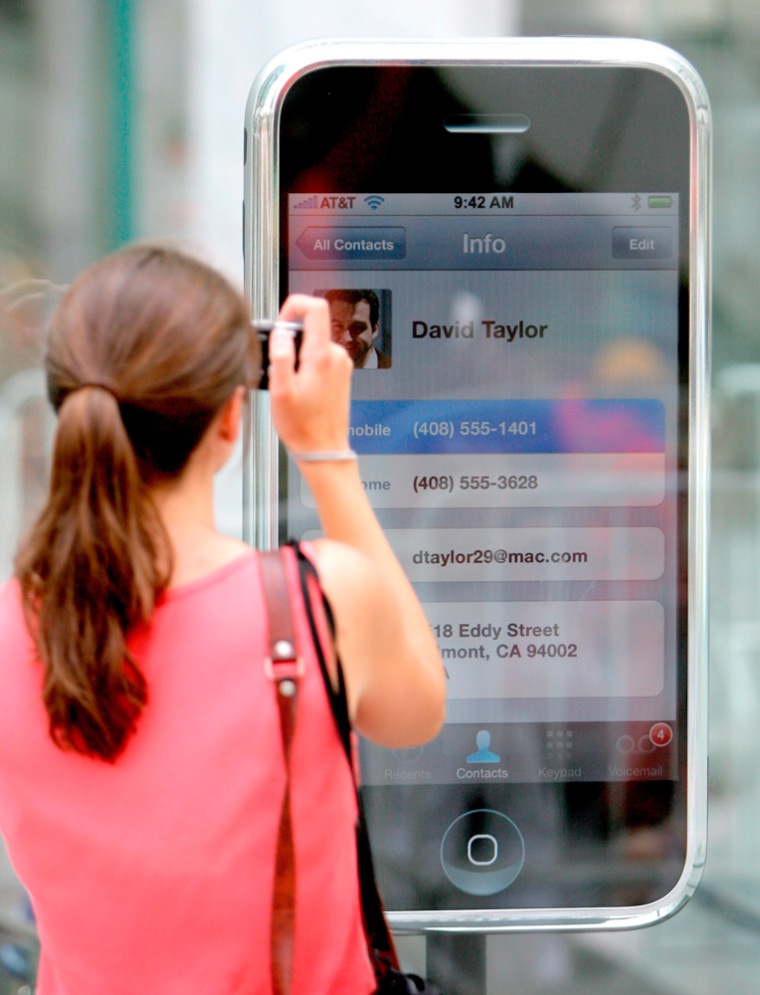In a cell phone market filled with choices that now include Apple’s iPhone, what do consumers want most in their phones?
A phone’s price, design and weight remain at the top of the list, with “camera capabilities ranking very high,” said Jerry Rocha, an analyst for Telephia, a research company that focuses on the mobile and telecommunications market.
The iPhone has a 2-megapixel camera, comparable or slightly higher than most phones on the market. In contrast, Nokia’s recently released N95 phone has 5 megapixels.
“When the camera phone was introduced, people said, ‘Why in God’s name would you want that?’ ” said Joseph Farren of CTIA – The Wireless Association.
“Now it’s one of the top features people look for in a phone.”
Keith Nowak, Nokia spokesman, said the N95, which also has 30 frame-per-second video capabilities, is one of the “tech leadership” phones in the company’s lineup.
It’s not for everyone.
“Some people are at either end of the scale — they’re ‘tech leaders’/tech-savvy users, or they just want to be connected and make a phone call,” Nowak said.
And it can be expensive to be a “tech leader.” The N95 retails for around $750.
The company also makes phones for “those who want to primarily use their phones to talk, but look good while they’re doing it,” Nowak said,
While camera features remain strong, the growing push toward mobile TV by companies like Verizon Wireless and Sprint, is also changing the cell phone landscape.
The initial iPhone will not have TV capabilities, but Apple announced last week iPhone users will be able to stream YouTube videos wirelessly to their phones.
There were 6.2 million cell phone users who subscribed to “some mobile or video service,” at the end of 2006, compared to 2.5 million at the end of the first quarter of the year, said Rocha, of Telephia,
“That’s a phenomenal increase,” he said.
In addition, more than 2.7 billion “multimedia messages” — such as photos and video — were sent by U.S. cell phone users in 2006, compared to 1.1 billion in 2005, according to CTIA.
Watching TV on a cell phone may be an acquired taste, akin to what camera phones were when they were released about five years ago.
And, unlike camera phones, phones with TV service mean an additional monthly charge. At Verizon Wireless, plans start at $15 a month for its V CAST Mobile TV basic package.
Brenda Raney, CQ Verizon Wireless spokeswoman, describes the early TV effort as “entertainment snacking,” such as clips from Jay Leno’s monologue and “snippets” of sports or news information “that a customer wants to access quickly.”
The company currently offers more than 25 kinds of phones in its lineup, from mobile TV-ready to very basic.
“The customer makes the decision; they pick the features that they want,” she said. “You have to have variety.”
And you have to have money — which your cell phone could be in the future.
“Down the road, your phone may become an ‘e-wallet,’ a payment mechanism,” said Farren of CTIA.
“You’ll use it to make purchases through bar-code scanning and text messaging.”
No matter what, he said, consumers, “want their phones to do a lot — and they want to do it easily.”
The “wow” factor of the iPhone aside, even Steve Jobs has said its “killer app” is making calls, especially with its integrated contacts and mapping features.
“What Apple has been able to do in the past, and what they promise with the iPhone, is ease of use,” said Farren.
“That’s always something that’s on the top of any handset maker’s mind.”
